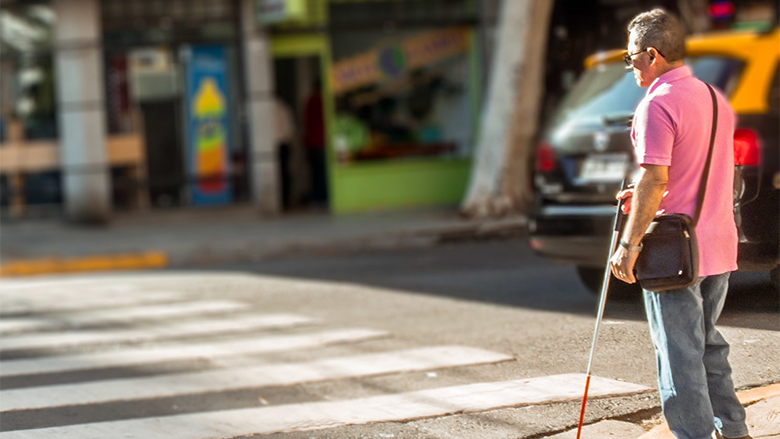WASHINGTON, DC, December 2, 2021 – According to a new World Bank report, there are approximately 85 million people with some kind of disability in Latin America and the Caribbean, 14.7% of the total population. The report discusses physical and legal barriers for people with disabilities and the need for greater efforts towards disability inclusion to build a more prosperous and resilient future. Global data shows that the exclusion of people with disabilities can mean a loss of 3-7% of a country’s GDP.
Within the framework of the International Day of Persons with Disabilities, celebrated every year on December 3, the report notes that one in three households in the region has at least one person with some kind of disability. According to the report “Inclusion of Persons with Disabilities in Latin America and the Caribbean: A Path to Sustainable Development”, the rate is higher in rural areas and among the poorest. The exclusion of people with disabilities is not only unfair but also unsustainable: 15% of children with disabilities do not attend school and one in two people with disabilities is not included in the labor market.
“Latin America and the Caribbean faces enormous challenges in rebuilding its economies from one of the most devastating crises caused by the COVID-19 pandemic. Global evidence shows that growth alone is not enough to reduce existing inequalities,” said Carlos Felipe Jaramillo, World Bank Vice President for Latin America and the Caribbean. “People with disabilities must be able to fully participate in public life, without experiencing discrimination or marginalization in school or the workplace. Moreover, they must be able to accumulate the human capital necessary to be included in society, enjoy dignity and opportunities in life, and contribute to the recovery of our countries.”
Poverty, lack of access to education and employment opportunities, informal treatment, lack of recognition of legal capacity and discrimination are realities experienced by people with disabilities every day. According to the report, disability and poverty are mutually influencing each other: one in five households living in extreme poverty in the region has a person with a disability. Moreover, nearly seven in ten households with a person with a disability are at risk of falling into poverty in crisis situations.
The report examines why some groups, such as women, rural residents, indigenous peoples and people of Afro-descendant, are especially vulnerable because they already face other disadvantages. For example, in diverse countries such as Brazil, Costa Rica, Ecuador, Mexico and Uruguay, people with disabilities are on average 24% less likely to complete primary school, a figure that rises to 30% if they are also ethnic or racial minorities. Gender inequality also exacerbates the disparities: in most countries in the region, people are more likely to be vulnerable if they are female-headed households. When households have functional dependents, the study finds that women are the ones who shoulder most of the unpaid care responsibilities. The value of unpaid care work ranges from 16% to 25% of GDP.
As disabilities tend to accumulate with age, the number of people with disabilities is likely to increase in the future due to the aging population. The region’s population aged 60 and over is expected to grow from 59 million today to 196 million by 2050, making it imperative to promote inclusive policies. Failure to do so could jeopardize the long-term sustainability of the post-pandemic recovery, the report said.
Given that persons with disabilities are a diverse group, the report stresses the importance of tailoring policies to the specific circumstances and contexts of each country. This requires more and better quality data, clear and measurable goals, addressing and eliminating stereotypes, and empowering disability organizations. The report highlights the extreme vulnerability of a large proportion of this group and highlights a visible increase in the exclusion of persons with disabilities, a situation that poses a major challenge for the sustainable development of Latin America and the Caribbean.
For more information about the World Bank’s work in Latin America and the Caribbean, visit www.worldbank.org/lac .
Find us on Facebook: http://www.facebook.com/worldbank
Stay up to date on Twitter: http://www.twitter.com/BancoMundialLAC
Our YouTube channel: http://www.youtube.com/BancoMundialLAC

